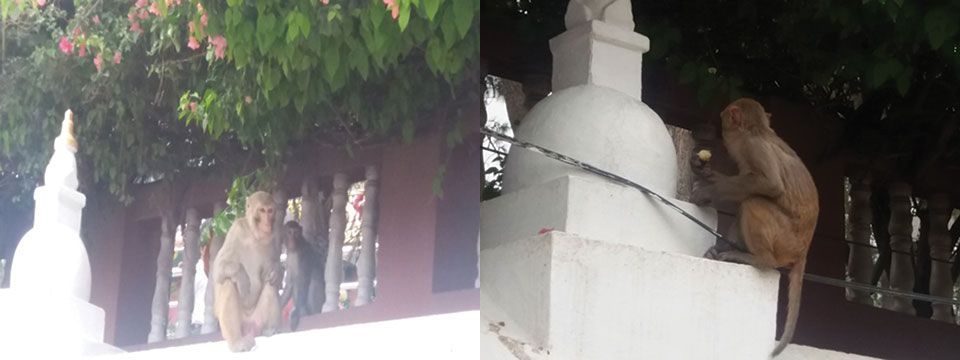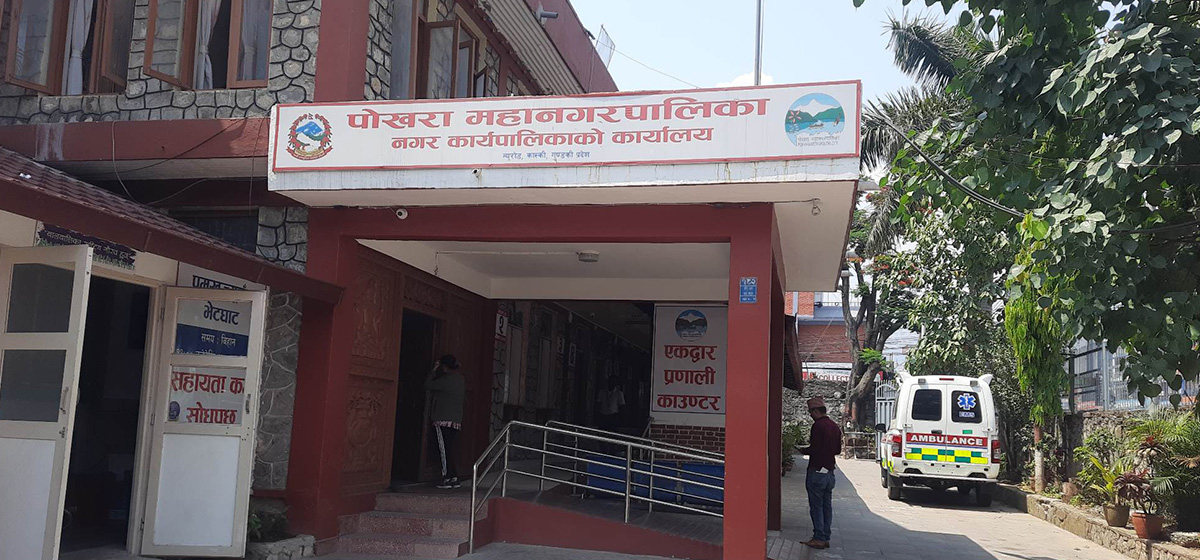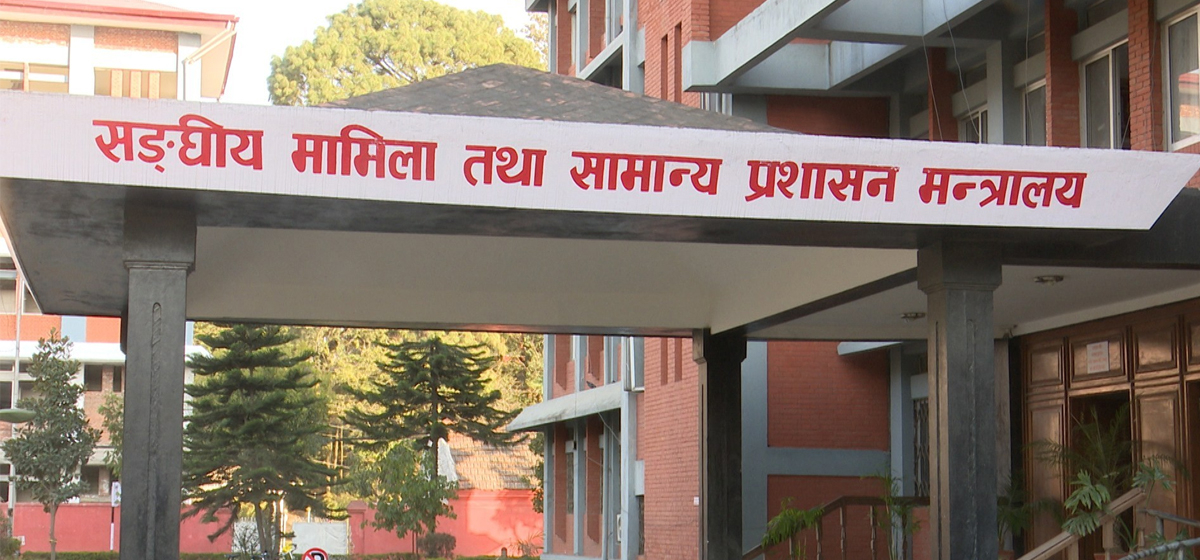
OR

With most of land lying barren, monkeys come to villages. Without fear, they feast on crop
Yours truly can’t stop wondering about this monkey state of mind, however hard he may try. I know, I know, how much the simians have troubled people living in those hills of Nepal where population is thin and youths are a rare sight. Yours truly has feelings for these folks living in rural areas, but what can he do except write about the menace?
Let yours truly try to get to the root of the problem. In keeping with the ages-old ‘Lahure’ tradition of sorts, the able-bodied Nepali youths spend their prime abroad. Many youths with scant education and a lot of courage still want to join those foreign armies where money is pretty high.
In most of the cases, if they fail to land relatively plum British, Singaporean, Bruneian security jobs, they try their luck with the Indian Army, state police forces, railway police etc. Many of the village youths also choose to join national security forces, go abroad and land, in most cases, 3D—dirty, difficult and dangerous—jobs, including in the baking heat of the Gulf, turning this God’s Own Country, endowed with natural resources and ideal climatic conditions into wasteland (simian land?)
Government data show that around 1,500 Nepali youths head abroad daily in search of jobs. What’s more worrisome is the fact that the exodus is increasing steadily every year. Even those pursuing education in Nepal choose to leave hometowns for major hubs like Kathmandu, Pokhara and Biratnagar, leaving elderly members of their families to fend for themselves. Youths leaving those hilly villages means party time for the monkeys as senior citizens, women and children do not have the strength to chase them away.
Besides, the rate of migration from Nepal’s hills to southern plains and Kathmandu is pretty high. This means most of the land in Nepal’s hills lies fallow and trees grow there, offering a suitable habitat for the simians. The residual population residing in the villages cannot raise cattle, leaving predators like leopards starved. Raising cattle means, among other things, providing food, especially in the form of calves, for the pards. No cattle in the sheds means keeping the pards away from villages.
Keeping the leopards away from the villages is akin to welcoming the simians, unlike in the past when the pards would also feast on the monkeys in the best case scenario and scare away the menacing creatures even in the worst case scenario.
With most of the land lying barren, armies of famished monkeys come to the villages. Without fear, they feast on whatever standing crop they come across. Even faint resistance can have dire consequences for humans.
This monkey menace is quite serious. Once in a while, you get to read reports about people from many villages across Nepal picketing local police posts to demand security from the menacing monkeys. What’s more, these days, controlling monkey menace has become an election agenda.
Chasing them away
We all may seek solace in the fact that one of our neighbors, India, has also been trying hard to fight off Lord Hanuman’s storm troopers. A backdated report in the Indian Express states that the Central Zoo Authority and the Wildlife Institute of India had inked an agreement with the California National Primate Research Centre (CNPRC) for “mitigation of the monkey menace in northern India,” which includes plans to develop population management strategies for the Rhesus Macaques in urban environments.
In this pessimistic scenario, a Business Standard report from the township of Dhankuta states that Indian experts are getting a whopping Rs 1,500 for catching a monkey. The report, quoting a local official, states that the municipality had allocated Rs 500,000 to fight the monkeys and shelled out another Rs 500,000 for the cause, but to no avail.
A fat pay-check for nothing, isn’t it? Shall we, too, go for the American expertise? What if we utilize our population dividend—the youths—to chase the troublemakers away?
What if our youths stop going abroad for joining foreign armies, doing 3D jobs, stay here and chase away those storm-troopers? A bit of training and they can chase away the menacing monkeys, for a good cause and, most probably, a fat check. During the local elections last year, the voters had sought commitment from the candidates on controlling the wildlife in the area.
A report from the township of Dhankuta, quoting a local official, said the municipality had allocated Rs 500,000 to fight the monkeys and an additional Rs 500,000 was also provided for the same, but the situation has only worsened.
Where will it end?
What is our small world coming to? Is it going to the monkeys and not to the dogs (When we were young, dogs would chase away monkeys from our villages. But these days, dogs, yours truly hears, are finding it hard to fight off the monkeys)? At this rate, will there come a time in our lifetime when the simians start ruling us the Homo sapiens? At this critical juncture, will the monkey god, the Great Hanuman, come to the rescue of the poor Homo sapiens? What mantra will make him come to us and chase away his storm troopers? Will reciting Hanuman Chalisa instead of arming yourself with arms and dogs help scare off this menacing army? Does our renowned monkey expert, Dr Mukesh Chalise, have any idea?
This human mind is full of questions like these. While yours truly cannot answer any of these questions, he can surely show you a couple of pictures that he recently took while studying the monkey mind at Swayambhu and other places.
Do enjoy, even by muttering your teeth against this monkey menace.
You May Like This

Monkey menace in Arghakhachi
ARGHAKHACHI, Aug 8: Monkeys have become a nuisance for farmers in several villages of Arghakhachi district. Wild monkeys come in troops... Read More...

Villagers unable to get rid of monkey menace
KHOTANG, June 19: As the monkeys visit their villages and destroy all their crops, farmers of Diktel Rupakot Majhuwagadhi-7, of... Read More...

The Monkey
The monkey on drapery clothes wiggles its tail and Showcases its cheap tricks. A road dancer jumps Looking at monkey's... Read More...



Just In
- UML Chair Oli appeals vote for Nembang
- APF seizes illegally imported 152 sacks of onions and 32 units of mobile phones from Dhansuha
- 80 civil servants left in the lurch as MoFAGA places them in reserve pool
- Weather Alert: Storm likely in Lumbini and Sudurpaschim
- NOC investing Rs 3 billion to construct fuel storage plants of over 9,000 kl capacities in Bhairahawa
- Reflecting on a festive journey filled with memories and growth
- Dalit sexual and gender minorities lack representation within their own communities and groups
- Nagdhunga-Sisnekhola tunnel breakthrough: Beginning of a new era in Nepal’s development endeavors

















Leave A Comment